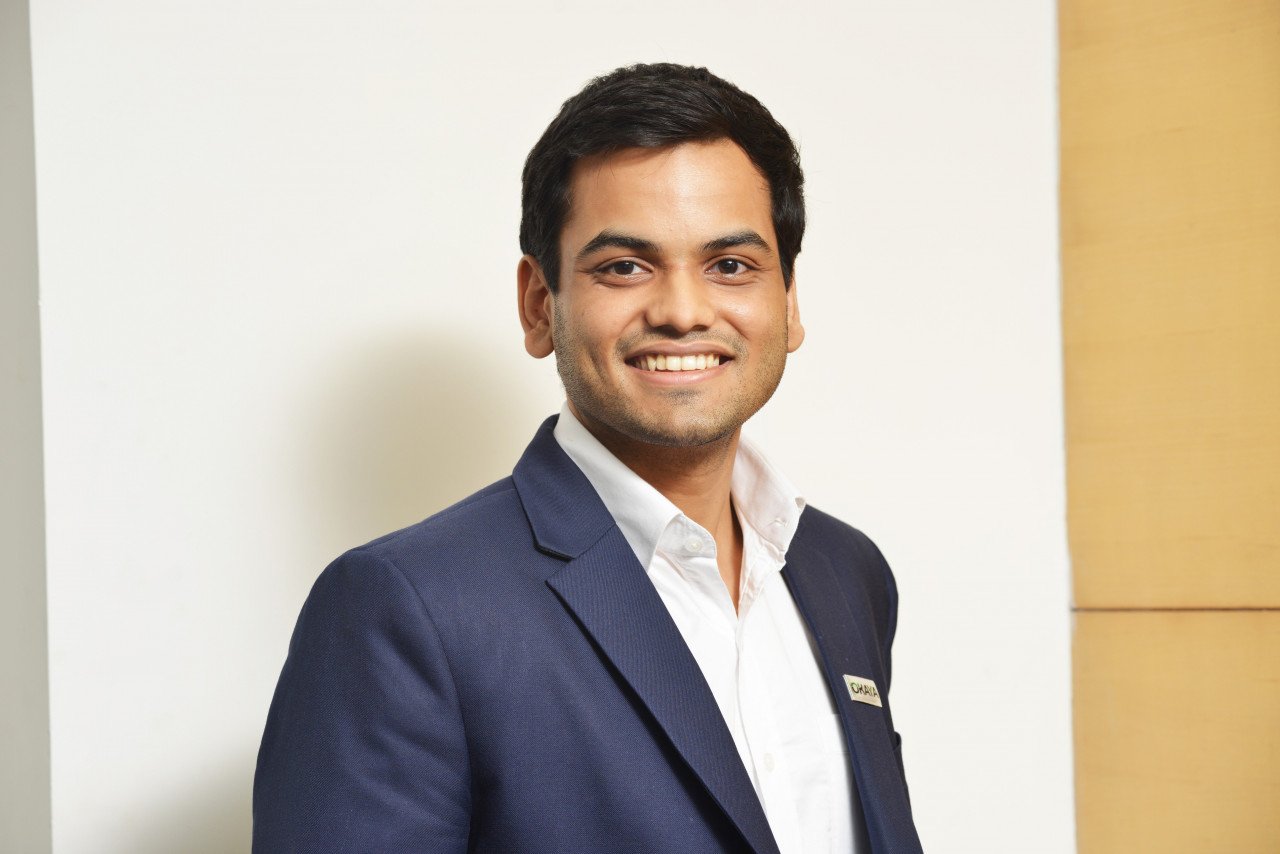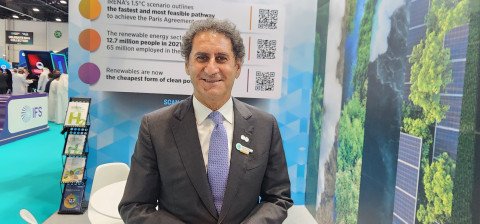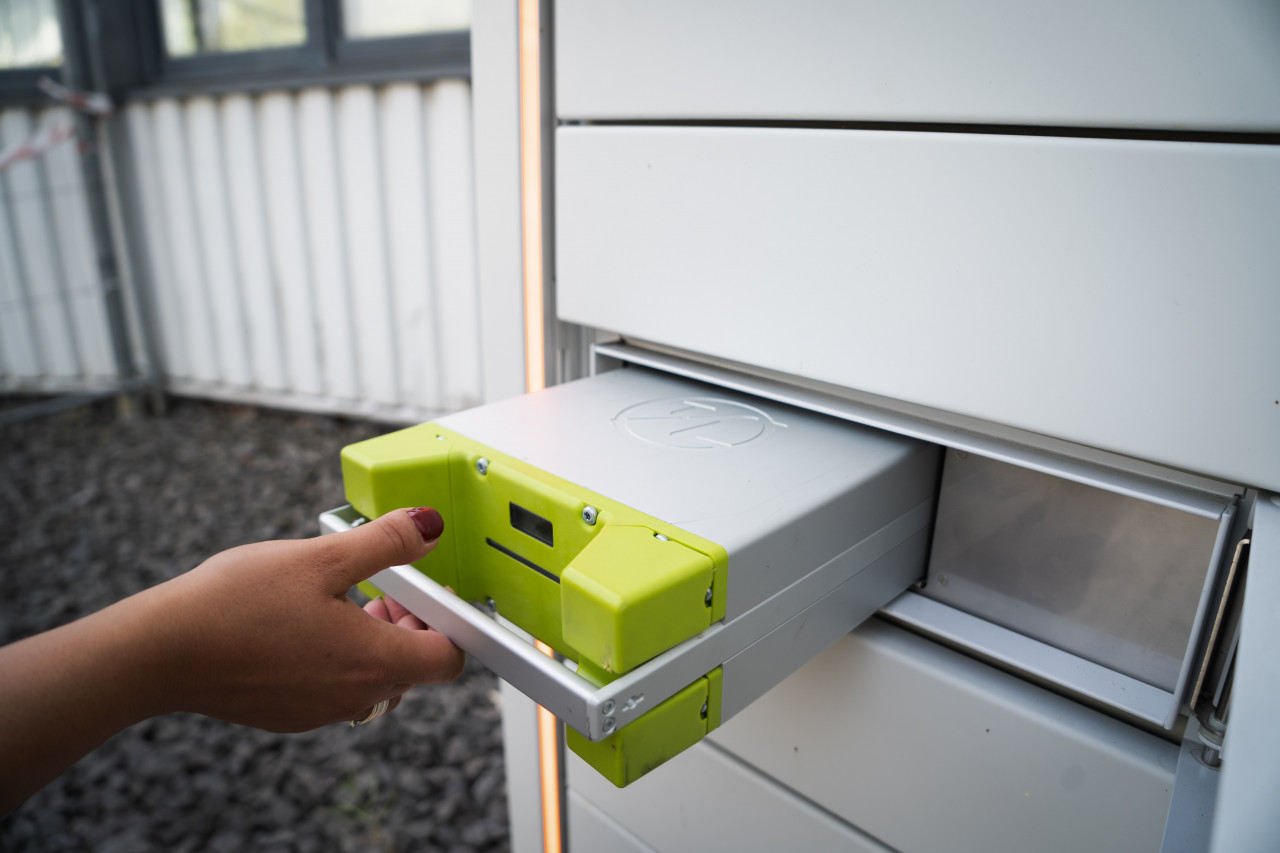Setting up a value chain of standards in the e-2W segment
As the electric vehicle market moves on and matures, a new entrant in the e-2W space is planning disruption through excellence. Anshul Gupta, Director - Okaya Power Group, discusses customer pain points with Ashok Thakur, Chief Editor – ETN, and how the company is equipped to overcome them.
Okaya Power Group is an established battery manufacturer, and has successfully ventured into the manufacturing of charging infrastructure and electronics; what will be your next big venture?
Yes, we have successfully ventured into the e-2W electric business and there is a lot more to come from us. Over the past two years we at Okaya EV, the electric vehicle arm of Okaya Power, have worked very aggressively to develop our own e-2W portfolio. It now gives me immense pleasure to announce that on July 1, 2021, we officially launched our e-2W and started billing and you are the first to know at ETN.
Simultaneously we opened our first experience centers in Delhi and Jaipur. On July 4, we had a mega-launch of Okaya Power Group's range of electric scooters. We intend to bring about a huge change and are taking a serious approach to a 360° transformation in the entire EV ecosystem.
What was the thought process behind Okaya EV?
It was a natural shift for us to vertically enter into a solution approach rather than merely build batteries for our customers. Another motivation was seeing the customers' pain over the last three to four years. With heavy incentives and an open playing field, first-time manufacturers, traders, startups and so many inexperienced entrants are venturing into the ecosystem. Eventually, it is the consumer who bears the brunt of having to make do with cheap imported products, minus any value-added features or services.
What counts in an electric scooter are the battery, electronics, and software. With 31 years of experience as battery manufacturers, combined with 35 of electronics excellence through our Microtek arm, we decided to enter the EV space and bring about a change. Based on our extensive R&D our research team has chosen a battery technology that gives more cycle life to batteries and works well even at 50°C temperature. We are very conscious of adaptability to the Indian conditions and Okaya EV's chargers, controllers and BMS can withstand extreme power fluctuations and extreme weather conditions.
What are your plans for the EV business? Will your products be entirely indigenous?
Ours is a third-generation family business and we make in India. Our fully sustainable, current manufacturing hub is in Himachal Pradesh. We are committed to quality and our newly launched e-scooter has been running many test miles on the high mountain roads of the State. To factor in future demand, we will also set up a plant in the State of Haryana in the next six months.
To target Tier 2 and 3 cities, we addressed both the entry and mid-level segments and launched two variants - the AvionIQ series and the Classic IQ series. This is a new-age e-scooter with cutting-edge technology that was created at state-of-the-art research centers dedicated exclusively to the development of EVs for India. This comes combined with the trust of Okaya. Additionally, we provide service at your doorstep, which no one in the country is currently providing.
As per our initial planning, we were focused more on the entry and mid-level segments. With the FAME subsidy extension, we increased our focus on our product for the premium segment, which is now scheduled for launch before Diwali. We are also looking forward to launching our high-speed motorcycles in early 2022. All in all, we have an excellent product line-up and it is going to be affordable.
This complements our vision to have an end-to-end supply chain from cell manufacturing to pack, BMS, chargers, and finally to a complete EV. With control over our entire supply chain, we can do what we are best at - value-add and offer a product that is par excellence to the customer. This is the philosophy behind our entry into the EV space
As per earlier reports, Okaya had no serious plans to enter cell manufacturing. Are you contemplating a move in that direction now?
There has been some change in strategy. Currently, our investments are more focused on the EV business. Once we can justify our EV volumes through retail and consumer reach, then it is in the natural order of things to enter into cell manufacturing. We did not want to enter into that area till we had an established retail network, where the growth comes in every year and a steady supply is assured to the consumers. So, if you have a good hold on a product and are selling to the consumer rather than just to the B2B or to the B2G segment, then it makes sense for us, in the long run, to get into cell manufacturing or at least do something substantial in that segment.
What kind of investment do you intend to put into the e-2W business, and what is the kind of capacity you are planning?
A ballpark figure would be an initial investment to the tune of Rs 75-80 crore. That includes the land, building team, products and moulds, design, everything. Since we have to launch products every year, we expect to invest a minimum of Rs 10-15 crore a year into the product and R&D.
Parallel to that, on the capacity for this year, we plan to sell around 26,000 vehicles. This is our first three-year target. Then we will increase the shifts, etc., so we can turn it up a notch. But the entire capacity is being planned at around 70,000 to 80,000 vehicles per annum.
Numerous players are currently active in the market; one such large startup claims it will be the world's biggest 2W manufacturer in e-mobility. How do you perceive yourself in such a scenario?
Ours is a niche style of functioning with our two strong USPs - our in-house supply chain and our exemplary servicing. Okaya can offer round-the-clock service to the customer within 24 hours. We aim to reduce response time to between four and six hours and add roadside assistance as well. We believe Okaya EV will pan out in a similar vein as Mictrotek, our electronics arm. We were not the first, we were probably sixth or seventh. But in a span of two to three years, we were number one. That is repeating itself in the case of our e-2Ws, and the reason is purely because of our investment in superior technology and command over the hardware and electronics. Couple that with the service that we offer and you have a winner.
We have identified the major pain point in the entire industry after a whole year of relentlessly racking our brains with numerous surveys, meeting consumers on a one-to-one basis, we placed an active team in the market to conduct ground surveys and gauge the pulse of the customer, my father even visited the dealers personally. In short, we did everything to understand customer needs. We found that the critical pain point - that nobody is addressing - is servicing: servicing the scooter, the battery, motor controller. And that is where we have directed our full focus – on our outstanding service as well as quality spares.
Product quality is a table stake. If you don't have good product quality to deliver, sales will never happen. It is the post-sales experience that we are focusing on. And we believe none of our competition is able to achieve our level of service quality simply because the battery is outsourced. Till you have battery control, I don't believe it will be easy for a company to sustain the three-year warranties that are offered. In some cases, even an eight-year warranty incentive is offered. So, if a battery manufacturer is entering the segment, then yes, that is a benchmark to consider.
At Okaya, we speak about a 360° eco-cycle. We have brought 80 percent under our control; the most difficult by far was probably charging stations. All other aspects of the e-scooters are wrapped up and we will now focus on recycling, which is one of our key objectives. The customer today is increasingly aware of sustainability. Given the option they would choose a socially responsible manufacturer; Okaya EV aims for a responsible and sustainable working of the e-2W ecosystem.
What are the battery charging options offered by you?
A survey on the batteries we have launched found that the B2C customers are home-charging and not swapping. As for battery manufacturers, it was easy for us to enter into the 'swapping station model. The current series is with a removable battery, which is to be charged at home. These same batteries can be used for swapping. We are also working on a universal platform. However, there is a special range of scooters with a slightly different connector that can be used for swappable batteries. We are looking to sell these in the B2B segment, wherein swapping is more common. Each of our dealers will also maintain a swapping station. We are also working on kirana shops to stock about four swappable batteries for emergencies. A B2B fleet can also use this facility.
Our standard product which is a 12-lattice swapping station will soon be available at the dealership as well. So, the initial model is with a removable fixed battery. A swappable battery will be like an additional option for the customer. With the current FAME subsidy though, I don't see swapping as a successful model in the B2C segment. The batteries will be manufactured as swappable but will be sold along with or as part of the purchased vehicle. Two or three batteries will be built in the vehicle itself. Those batteries will be swappable at the swapping station.
Having the entire supply chain under your control, you have been able to manage cost, the benefit of which is passed on to the consumer. Could that lead to a price war in the market? What is your opinion?
We are not going to start a price war for sure. At the end of the day, we don't want to position our product at a price where consumers feel hesitant to purchase. We will certainly provide several value-added features. On the service front, we will meet the customer at his doorstep to solve his problems. If I was a consumer purchasing a scooter or a car, if it is priced too low compared with a branded company, it would immediately raise my antennae. We will price on par with our competition. We will however provide fair options for the customer to choose from.
We find that the entire experience of the user from purchase to post is under-served. We are going to play on these two points, but definitely not start a price war!
When you heard of the FAME 2 subsidies being extended to 2024, how did it add fuel to your existing plans?
In fact, we had a crack-down the day it was announced and had to change our entire strategy. Originally, we were focusing on the low-speed segment but realized that would actually be ousted with the new FAME 2 extension. It is more affordable for people to shift to high-speed vehicles because one can actually avail of a higher subsidy. Shifting to high-speed vehicles, I think is a great idea for the entire country because most of the importers, small-time fly-by-night assemblers will be eliminated from the picture. It is a huge cost to get the product ready for FAME approval. So yes, I think it really added a turbo-charge to all our plans - the speed at which all of us were aligned just quadrupled.
What battery chemistries have you selected for Okaya's EV portfolio?
We have launched two battery types. Firstly, we are promoting lithium iron phosphate or LFP batteries, which are our own technical selection. The other is the lead-acid battery which means we have covered both entry and mid-range levels with the two battery types. Lead-acid will primarily govern 30 percent of our entire sales. We were assuming 70 percent of Li-ion batteries. However, with the FAME subsidy now out, the newer models will be 90 percent Li-ion.
What is the range of your vehicles on a full charge for both segments?
We have launched a 48 V 30Ah e-bike with a lithium battery. That gives around 80 to 85 km per charge as of now. The other variant with options like 24Ah is also available as well as a higher range battery. Customers who are concerned about range can opt for a 42Ah battery. But the new models will have an extended range up to 120 to 130 kms with multiple packs.
The range is not a matter of concern for us, it is a basic necessity. The major concern I would say is safety. The entire product line will consist of LFP technology. We have been propagating LFP to our customers for a long now. The safety factor is higher and in the event of a problem an LFP battery will do nothing more than emit smoke, allowing sufficient time for safety action.
What is your e-2W target segment? For whom would you say you have designed this product?
We have a smaller-sized scooter called AvionIQ, which I feel would be good for women and students. A slightly bigger vehicle in height and dimensions, the ClassIQ would be suitable for office goers, students, working women, and seniors. It is a very versatile product that could fit with an age group anywhere between 16 and 65. The motorcycle will be focused on the 18 to 35 age segment since it will be a heavy, sharp-looking product. I am very excited about this product. We have experimented on a variety of options and we will launch a very robust e-bike in the motorcycle segment.



















